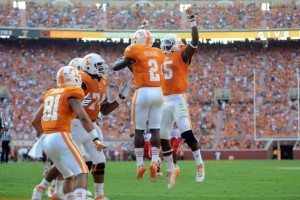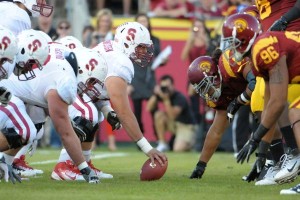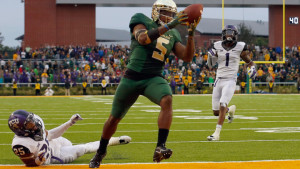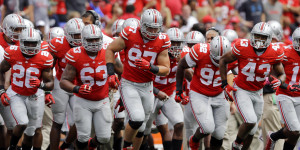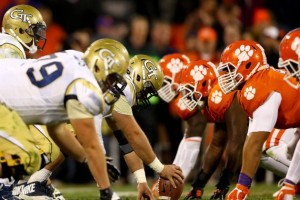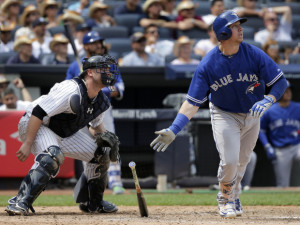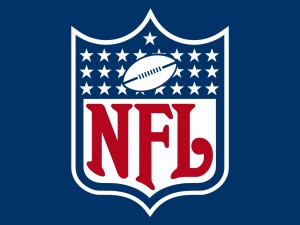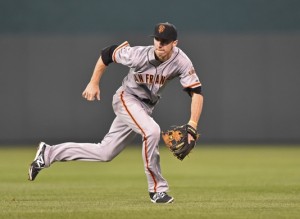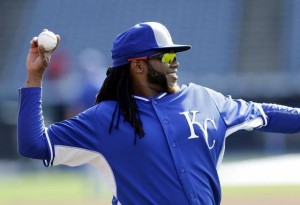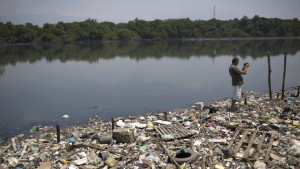
Did I ever think that I would actually be writing about the quality of water in a South American country? No, but that’s life, and that’s become sports, too, recently.
To catch you up on recent events (if you haven’t been following), the Associated Press published an investigation into the water that the athletes of the 2016 Rio Olympics will be swimming and rowing in next August. Here’s an excerpt:
RIO DE JANEIRO (AP) — Athletes in next year’s Summer Olympics here will be swimming and boating in waters so contaminated with human feces that they risk becoming violently ill and unable to compete in the games, an Associated Press investigation has found.
An AP analysis of water quality revealed dangerously high levels of viruses and bacteria from human sewage in Olympic and Paralympic venues — results that alarmed international experts and dismayed competitors training in Rio, some of whom have already fallen ill with fevers, vomiting and diarrhea.
It is the first independent comprehensive testing for both viruses and bacteria at the Olympic sites.
Brazilian officials have assured that the water will be safe for the Olympic athletes and the medical director of the International Olympic Committee said all was on track for providing safe competing venues. But neither the government nor the IOC tests for viruses, relying on bacteria testing only.
Extreme water pollution is common in Brazil, where the majority of sewage is not treated. Raw waste runs through open-air ditches to streams and rivers that feed the Olympic water sites.
As a result, Olympic athletes are almost certain to come into contact with disease-causing viruses that in some tests measured up to 1.7 million times the level of what would be considered hazardous on a Southern California beach.
Despite decades of official pledges to clean up the mess, the stench of raw sewage still greets travelers touching down at Rio’s international airport. Prime beaches are deserted because the surf is thick with putrid sludge, and periodic die-offs leave the Olympic lake, Rodrigo de Freitas, littered with rotting fish.
That’s disgusting. FIFA and Sepp Blatter look at that and say, “that’s despicable”. But this is no laughing matter. And lest you think it won’t get worse, it does. Back to the report:
The AP also measured fecal coliform bacteria, single-celled organisms that live in the intestines of humans and animals. Fecal coliforms can suggest the presence of cholera, dysentery, hepatitis A and typhoid.
In 75 percent of the samples taken at the Olympic lake, the number of fecal coliforms exceeded Brazil’s legal limit for “secondary contact,” such as boating or rowing — in two samples spiking to over 10 times the accepted level. The Marina da Gloria venue exceeded the limit only once, while at Rio’s most popular tourist beach, Ipanema, fecal coliforms tested at three times the acceptable level in a single sample. At Copacabana, the AP tests found no violations of fecal coliform counts.
Fecal coliforms have long been used by most governments as a marker to determine whether bodies of water are polluted because they are relatively easy and cheap to test and find. Brazil uses only bacterial testing when determining water quality.
In Rio, the fecal coliform levels were not as astronomical as the viral numbers the AP found. That gap is at the heart of a global debate among water experts, many of whom are pushing governments to adopt viral as well as bacterial testing to determine if recreational waters are safe.
That’s because fecal coliform bacteria from sewage can survive only a short time in water, especially in the salty and sunny conditions around Rio. Human adenoviruses have been shown to last several months, with some studies even indicating they can last years.
That means that even if Rio magically collected and treated all its sewage tomorrow, its waters would stay polluted for a long time.
The diseases mentioned (cholera, dysentery, typhoid, and hepatitis A) are all bad, so bad that they all have death rates. While these death rates are minimal, they increase dramatically when untreated. A swimmer/rower coming down with this disease and not treating it is very plausible, the athletes may not be aware of the symptoms. These athletes may also want to push through that pain, especially because of the absurd amount of training that goes into the Olympics. Nonetheless, the risk of death exists for two reasons: the IOC and the Rio government.
The IOC stands for International Olympic Committee, and it essentially runs the Olympic games. Most importantly, it’s a corrupt organization that has fallen under a multitude of controversies just in the last ten years. So it shouldn’t come as a surprise when this was announced just yesterday:
RIO DE JANEIRO — The International Olympic Committee ruled out conducting viral tests of Rio de Janeiro’s sewage-laden waterways ahead of the 2016 games, a top official said Wednesday, despite an Associated Press study showing dangerously high levels of disease-causing viruses at all aquatic venues, with experts saying athletes are almost certain to be exposed to pathogens.
Speaking at a news conference dominated by questions about Rio’s sewage pollution problem, Olympic Games Executive Director Christophe Dubi said the IOC will be sticking to World Health Organization guidelines recommending only bacterial testing.
The AP’s independent analysis of water quality showed high levels of viruses and, in some cases, bacteria from human sewage in all of Rio’s Olympic and Paralympic water venues, including the Rodrigo de Freitas Lagoon, where rowing will take place, the Guanabara Bay, where the sailing competition are to be held, and at Copacabana Beach where distance swimming events will take place.
In two separate emailed statements following the AP’s July 30 publication about its study, the World Health Organization said it was advising the International Olympic Committee “to widen the scientific base of indicators to include viruses.”
However, in an emailed statement Monday, the organization backpedaled and said that “WHO has not and will not issue an ‘official recommendation’ on viral testing.”
So, the IOC’s reaction to human sewage, bacteria, and disease-causing viruses is, basically, “Yeah, whatever.” You may have heard stories like the one that came out of Rio last week, in which thirteen of the forty rowers on the United States Rowing Team fell ill with stomach problems. The team doctor believes that the sicknesses are due to impurity in the Rio waters that the team was training in, and she’s probably right.
But the IOC, in another episode of being the IOC, not only deemed the waters safe but also denied the doctor’s claims. Nawal El Moutawakel, the leader of the inspection team in charge of checking the waterways that will be used in the Olympics, said this:
The IOC puts on the highest priority the athletes and our friends around this table are doing their upmost so that this issue of water quality is being heavily dealt with so the athletes can compete in secure and safe environments.
Yeah, sure you do. I’ll take hypocrisy for $1,000, Alex.
Answer? Daily Double. Daily Double because she said that the athletes and the playing conditions are the two highest priorities, both taking precedent over special interests. This is a double dose of BS from a company full of it. Is there more? Of course there’s more!
The city of Rio De Janeiro was awarded these Olympics in 2009, giving them seven years to prepare, and preparing for the games includes cleaning up the water. Per the International Business Times, the Rio government didn’t exactly do that:
Rio’s Olympic officials vowed in 2009 to address 80 percent of the area’s water pollution before the 2016 games began. Earlier this year, city government officials said funding for cleanup efforts would be drawn from an $8.8 billion budget devoted to “legacy projects,” such as water pollution and transportation infrastructure, USA Today reported. But Andre Correa, Rio’s environment secetary, acknowledged an 80 percent cleanup was “not going to happen” and said it would cost about $3.8 billion to establish a sewer system capable of fully addressing Rio’s needs.
A monthslong Associated Press investigation found in July that all of Rio’s Olympic waterways were brimming with bacteria and viruses from human waste. In one case, the level of water pollution was more than one million times worse than an acceptable standard on a California beach, the AP reported.
Oh yeah. The fun starts with the money being taken out of the “legacy projects”, which were supposedly being used to help the city’s infrastructure and pollution. However, the goal of an 80 percent cleanup was obviously never going to happen, so why did the government promise to get it done? It’s obvious that the city did not want to let the IOC down, but an 80 percent cleanup was still unrealistic.
And even this is on the IOC, too. With the knowledge that the water was contaminated and even a total cleanup would still leave a good deal of the pollutants in the water, why did Rio get the games? With swimming and rowing events occurring in these waters, how did the country with the most polluted water get the right to host them in the largest worldwide competition there is?
As you can imagine, these pieces of news, along with the handling of the situation by the IOC and the Rio government, have drawn complete outrage from many. The loudest critic of the IOC recently has probably been ESPN’s Mike Greenberg, and he said this today on his radio show, Mike & Mike:
Interestingly enough, this question was actually asked to the IOC officials last week. This is how that scenario went down, per CBS News:
Asked whether they themselves would swim in the bay to prove the water’s quality — as Rio’s state environmental secretary did on a television program earlier this year — the officials laughed jocularly and shifted in their seats.
“We will dive together,” said El Moutawakel with a giggle, pointing to other IOC officials she said would take the plunge with her.
But honestly, if you really think that the IOC officials are going to dive into the polluted water together, you are probably losing a grip on reality. It’s not happening.
The IOC and the government of Rio have combined to make this the most dangerous Olympics in recent memory. We have to get past the corruption and bribery of Olympics past, because this is worse. Human lives are now at risk.
There wasn’t any bribery with these Olympics (that we know of). There wasn’t much controversy until now. But there may be some major illnesses for the athletes involved, which is the real shame in all of this.
Every athlete in the Olympics has pushed himself or herself to his or her maximum potential. Making the games is a dream come true for everyone involved, and, as I said before, these games are a once in a lifetime opportunity. And, for swimmers and rowers, that once in a lifetime may involve cholera, dysentery, or other ills that put these athletes in very real and serious danger.
Danger brought about by the Rio government and the IOC.

